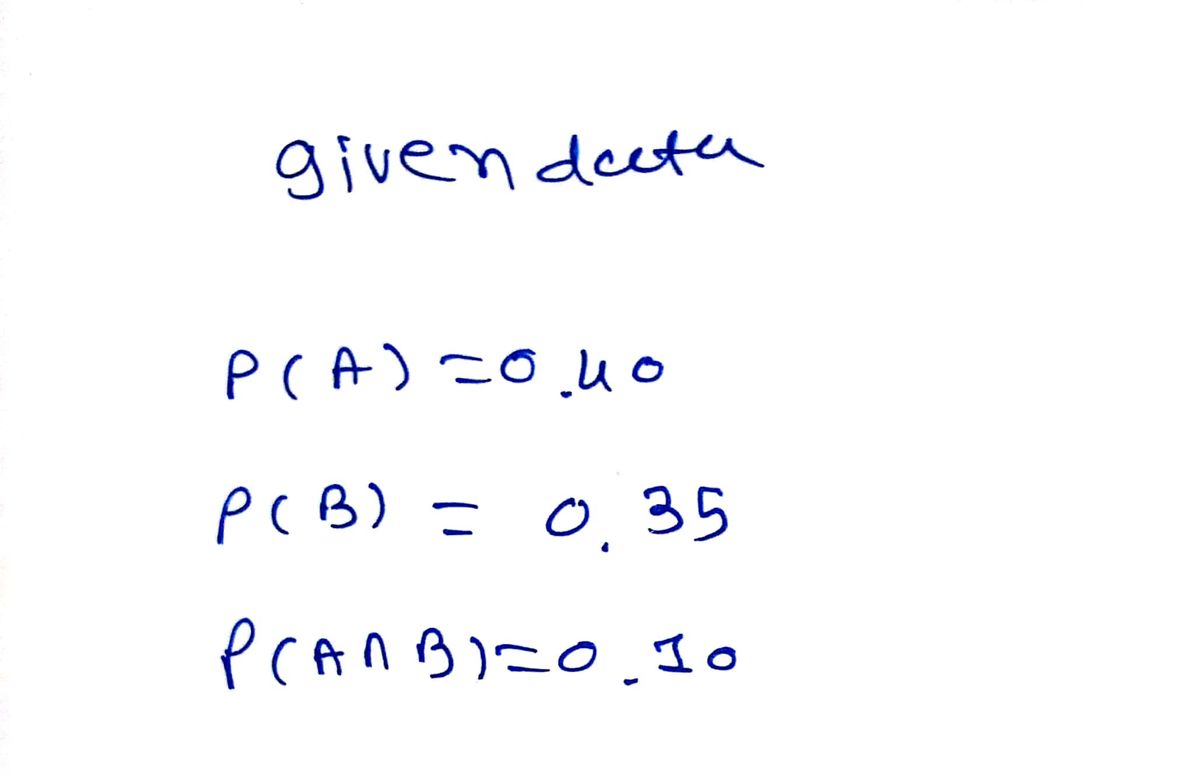6. Given that P(A) = 0.40, P(B) = 0.35, and P(AB) = 0.10, find; P(A) P(AUB) P(An B9) a. b. C.
6. Given that P(A) = 0.40, P(B) = 0.35, and P(AB) = 0.10, find; P(A) P(AUB) P(An B9) a. b. C.
A First Course in Probability (10th Edition)
10th Edition
ISBN:9780134753119
Author:Sheldon Ross
Publisher:Sheldon Ross
Chapter1: Combinatorial Analysis
Section: Chapter Questions
Problem 1.1P: a. How many different 7-place license plates are possible if the first 2 places are for letters and...
Related questions
Question

Transcribed Image Text:6.
Given that P(A) = 0.40, P(B) = 0.35, and P(AB) = 0.10, find;
P(A)
P(AUB)
P(An B9)
a.
b.
C.
Expert Solution
Step 1

Step by step
Solved in 2 steps with 2 images

Recommended textbooks for you

A First Course in Probability (10th Edition)
Probability
ISBN:
9780134753119
Author:
Sheldon Ross
Publisher:
PEARSON


A First Course in Probability (10th Edition)
Probability
ISBN:
9780134753119
Author:
Sheldon Ross
Publisher:
PEARSON
